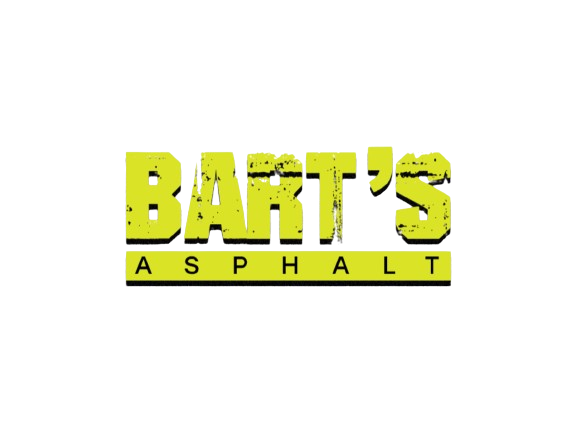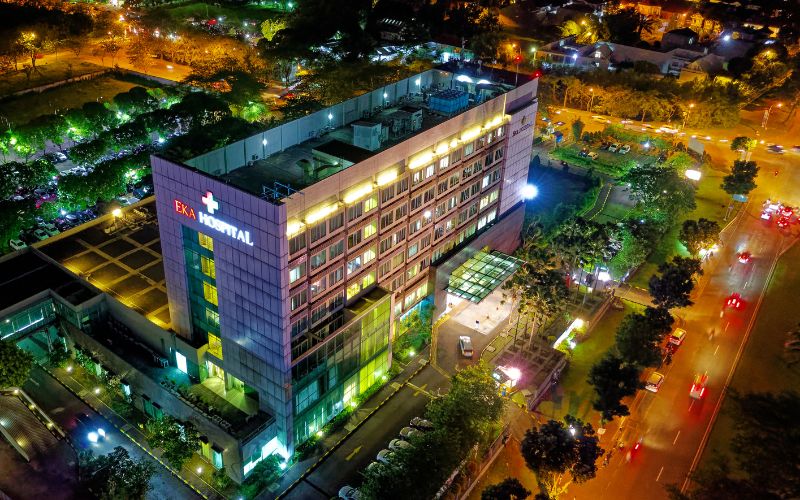Parking lots serve as the critical first point of contact for patients, staff, and visitors at Lansing’s medical facilities. Far more than simple transportation surfaces, these areas represent essential healthcare infrastructure that directly impacts patient experience, operational efficiency, and institutional safety. The asphalt surfaces of medical centers must withstand unique challenges that go far beyond standard commercial parking requirements.
Lansing’s healthcare landscape demands extraordinary infrastructure solutions. From Sparrow Hospital to McLaren Greater Lansing, medical centers require parking areas that can support 24/7 operations, accommodate emergency vehicles, ensure patient accessibility, and withstand constant, intense use. These surfaces are living, dynamic spaces that play a crucial role in delivering critical healthcare services.
Understanding Unique Challenges of Healthcare Facility Parking Lots
Healthcare facility parking lots represent a complex ecosystem of infrastructure challenges that require sophisticated maintenance approaches. The constant movement of vehicles creates unique stress patterns unlike any other commercial environment. Emergency vehicles, patient transport services, staff vehicles, and visitor traffic interact in a delicate balance that demands exceptional surface performance.
The operational demands of medical centers create distinctive wear patterns that challenge traditional maintenance approaches. Emergency department access areas experience concentrated stress from ambulances and rapid-response vehicles. Patient drop-off and pick-up zones require surfaces that can accommodate slow-moving, precisely maneuvered vehicles while maintaining structural integrity. Staff parking areas endure consistent, high-volume traffic with unique movement characteristics.
Michigan’s extreme climate adds another layer of complexity to healthcare facility parking lot maintenance. Dramatic temperature variations, intense winter conditions, and summer heat create a perfect storm of environmental stress. These surfaces must remain fully functional and safe through every seasonal transition, supporting critical healthcare operations without interruption.
Diagnostic Approaches for Medical Facility Surfaces
Modern diagnostic techniques have revolutionized approaches to healthcare facility parking lot maintenance. Advanced technologies like ground-penetrating radar, infrared scanning, and specialized assessment tools provide unprecedented insights into surface conditions. These methods can detect subsurface variations, potential structural weaknesses, and early signs of deterioration that would remain invisible through traditional inspection methods.
Professional assessment for medical facility surfaces goes far beyond simple visual inspection. Maintenance experts conduct comprehensive evaluations that examine surface integrity, base layer stability, specific traffic characteristics, and potential accessibility challenges. The diagnostic process considers multiple complex factors, including emergency vehicle access requirements, patient mobility needs, and the unique stress patterns of medical center parking environments.
The goal of these sophisticated diagnostic approaches extends beyond simple maintenance. For medical facilities, parking lot assessments are about ensuring continuous, safe access to critical healthcare services. Every surface imperfection represents a potential risk to patient care, making comprehensive evaluation a matter of operational critical importance.
Safety and Accessibility Considerations
Safety and accessibility represent the most critical considerations for healthcare facility parking surfaces. ADA compliance is not just a regulatory requirement but a fundamental commitment to patient care and inclusivity. Surfaces must provide seamless, barrier-free access for patients with diverse mobility challenges, ensuring that every individual can access medical services with dignity and ease.
Emergency vehicle access requires specialized design considerations that go beyond standard parking lot approaches. These areas must accommodate large emergency vehicles, provide clear and immediate access routes, and maintain structural integrity under the most demanding conditions. Surface design must consider turning radiuses, load-bearing capabilities, and immediate accessibility for critical patient transport vehicles.
Pedestrian safety becomes paramount in medical facility parking environments. Surfaces must provide clear, well-marked pathways, minimizing potential trip hazards and ensuring safe movement for patients who may have limited mobility. Lighting, surface evenness, and strategic marking become critical components of a comprehensive safety strategy.
Economic Considerations for Healthcare Facility Managers
The financial implications of parking lot maintenance represent a critical consideration for medical facility managers. Comparative cost analyses reveal compelling economic insights that demonstrate the profound benefits of proactive maintenance strategies. Reactive repair approaches can cost between $20-$50 per square foot, while proactive maintenance strategies typically range from $5-$10 per square foot.
These figures represent more than simple numerical comparisons. They tell a story of strategic infrastructure management where intelligent investment can potentially save healthcare facilities significant resources. Proactive maintenance transforms parking lots from potential operational liabilities into strategic assets that support critical healthcare delivery.
The economic benefits extend far beyond direct repair costs. Well-maintained surfaces contribute to improved patient experience, reduce potential liability risks, and demonstrate a commitment to comprehensive healthcare infrastructure management. For Lansing’s medical centers, this can directly impact patient satisfaction, operational efficiency, and institutional reputation.
Specialized Repair and Maintenance Techniques
Healthcare facility parking lot maintenance requires a level of sophistication that far exceeds standard commercial surface treatments. Repair approaches must address the unique challenges of high-stress medical facility environments, considering the critical nature of these surfaces and their role in supporting essential healthcare services. Professional repair techniques involve comprehensive surface preparation, specialized material selection, and advanced application methods that ensure long-lasting, durable results.
Pothole repair and surface restoration for medical facility parking areas demand extraordinary precision. These techniques involve more than simply filling surface cavities – they require comprehensive structural assessment, specialized material selection, and precise application methods that restore full functionality while maintaining safety and accessibility. Emergency access zones and high-traffic areas require particularly specialized approaches that can withstand intense, concentrated use.
High-stress areas require targeted maintenance strategies that recognize the unique wear patterns of medical facility parking environments. Entrance and exit points, emergency vehicle lanes, and primary patient access routes experience concentrated stress that demands sophisticated, proactive maintenance approaches. Property managers must develop comprehensive strategies that address these specific challenges while maintaining optimal surface performance and patient accessibility.
Traffic Flow and Parking Management
Effective traffic flow management represents a critical consideration for medical facility parking infrastructure. Surface design and maintenance must create comprehensive solutions that optimize movement, ensure safety, and support the complex operational needs of healthcare facilities. The parking lot becomes a sophisticated system that must accommodate multiple user types with varying needs and urgencies.
Strategic infrastructure design involves a holistic approach to space utilization and patient movement. Facility managers must carefully consider how surfaces can facilitate efficient movement for emergency vehicles, patient transport services, staff, and visitors. This requires a comprehensive understanding of traffic patterns, operational requirements, and the critical nature of healthcare facility access.
Advanced marking techniques and intelligent design can significantly improve parking lot functionality. By implementing strategic line striping, creating clear traffic flow patterns, and developing design solutions that maximize available space, medical facilities can transform their parking areas from simple vehicle storage spaces into sophisticated, patient-centered infrastructure elements.
Seasonal Maintenance Planning
Seasonal maintenance for medical facility parking surfaces in Lansing requires a comprehensive approach that anticipates the unique challenges of Michigan’s extreme climate. The dramatic temperature variations and intense weather conditions demand a sophisticated strategy that goes far beyond standard surface treatment, recognizing the critical nature of maintaining continuous access to healthcare services.
Winter preparation emerges as a critical maintenance window. Facility managers must develop comprehensive approaches that protect surfaces from the destructive freeze-thaw cycles characteristic of Michigan winters. Late fall provides an optimal period for implementing protective treatments, crack sealing, and comprehensive surface preparations that can shield the asphalt from potential winter damage while ensuring continued accessibility for patients and staff.
Summer offers an ideal opportunity for more extensive repair and renovation projects. The extended daylight hours and stable temperatures create perfect conditions for comprehensive asphalt work. During these months, facility managers can undertake significant maintenance projects with minimal disruption to medical operations, addressing issues accumulated during the winter months and preparing surfaces for the coming year.
Technology and Innovation in Medical Facility Asphalt Management
Technological innovations are fundamentally transforming approaches to medical facility parking lot maintenance. Advanced diagnostic technologies now provide unprecedented insights that enable predictive, data-driven maintenance strategies. Ground-penetrating radar, infrared scanning, and sophisticated monitoring systems allow for early detection of potential infrastructure issues before they become critical problems that could impact patient care.
Smart monitoring systems represent a revolutionary approach to infrastructure management. These advanced technologies can continuously assess surface conditions, predict potential maintenance needs, optimize repair scheduling, and provide comprehensive data that allows for more strategic decision-making. By leveraging real-time analytics and sophisticated sensor technologies, medical facility managers can transform reactive maintenance approaches into proactive, predictive infrastructure management strategies.
Emerging technologies are pushing the boundaries of what’s possible in medical facility surface maintenance. Innovations in material science, predictive analytics, and monitoring technologies are creating new possibilities for infrastructure management. These advancements promise to provide even more sophisticated approaches to protecting and maintaining critical surfaces that support essential healthcare services.
Compliance and Regulatory Considerations
Compliance and regulatory adherence represent critical considerations for medical facility parking lot maintenance. Multiple layers of regulations, including ADA requirements, healthcare facility safety standards, and emergency access guidelines, create a complex framework that demands precise attention to detail. These requirements go far beyond simple surface maintenance, representing a comprehensive approach to patient safety and accessibility.
Healthcare facility safety standards create a sophisticated set of requirements that touch every aspect of parking lot design and maintenance. Surfaces must meet stringent criteria for accessibility, emergency vehicle access, patient safety, and operational efficiency. This requires a holistic approach that considers multiple regulatory frameworks simultaneously, ensuring that every aspect of the parking infrastructure supports optimal patient care.
Emergency access regulations represent a particularly critical consideration. Parking lot designs must provide unobstructed, immediately accessible routes for emergency vehicles while maintaining patient and staff safety. This requires sophisticated infrastructure solutions that balance multiple competing priorities, ensuring that critical healthcare services can be delivered without impediment.
Environmental and Sustainability Factors
Environmental sustainability has become a critical consideration in modern medical facility infrastructure maintenance. For Lansing’s healthcare centers, this approach goes far beyond simple environmental responsibility, representing a sophisticated strategy for long-term infrastructure management and resource conservation that aligns with broader healthcare sustainability goals.
Advanced sustainable maintenance technologies offer a comprehensive approach to infrastructure preservation. These innovative solutions focus on developing maintenance strategies that minimize environmental impact while maximizing surface performance. Eco-friendly approaches incorporate recycled materials, reduce carbon footprint, and develop more sustainable application techniques that protect both the immediate infrastructure and the broader environmental ecosystem.
The long-term benefits of sustainable infrastructure maintenance extend far beyond immediate environmental considerations. By implementing green infrastructure strategies, medical facilities can potentially reduce long-term maintenance costs, improve overall surface performance, and demonstrate a commitment to environmental stewardship that aligns with broader healthcare sustainability initiatives.
Bart's Asphalt Approach to Healthcare Facility Maintenance
Bart’s Asphalt has developed a comprehensive approach to healthcare facility parking lot maintenance that goes far beyond standard service offerings. Our methodology combines deep local knowledge, advanced technological capabilities, and a commitment to providing exceptional infrastructure solutions tailored to Lansing’s unique medical environment.
Local expertise forms the foundation of our approach. Our team possesses an intimate understanding of Lansing’s specific healthcare infrastructure challenges, including the unique environmental conditions, operational requirements, and complex maintenance needs of medical facilities. This hyperlocal knowledge allows us to develop maintenance strategies that provide maximum protection and long-term value.
Advanced diagnostic technologies enable us to provide unprecedented insights into infrastructure condition and maintenance requirements. We utilize state-of-the-art assessment tools to create comprehensive maintenance strategies that address both immediate protection needs and long-term infrastructure preservation. Our approach combines cutting-edge technology with deep local understanding to deliver exceptional results that support critical healthcare services.
Conclusion
Professional parking lot maintenance represents a critical strategy for protecting and enhancing healthcare infrastructure in Lansing. By implementing comprehensive, proactive maintenance approaches, medical facility managers can preserve critical surfaces, reduce long-term expenses, and support optimal patient care.
Frequently Asked Questions
Q: How often should our medical center’s parking lot be professionally assessed? A: We recommend comprehensive professional inspections at least twice annually, with additional assessments after periods of extreme use or significant environmental stress.
Q: Can maintenance be performed with minimal disruption to our facility’s operations? A: Absolutely. Our specialized approaches are designed to minimize operational downtime, utilizing strategic scheduling and advanced application techniques that maintain critical access for patients and staff.
Ready to protect your Lansing medical center’s critical infrastructure? Contact Bart’s Asphalt for a comprehensive maintenance assessment that goes beyond standard solutions.


